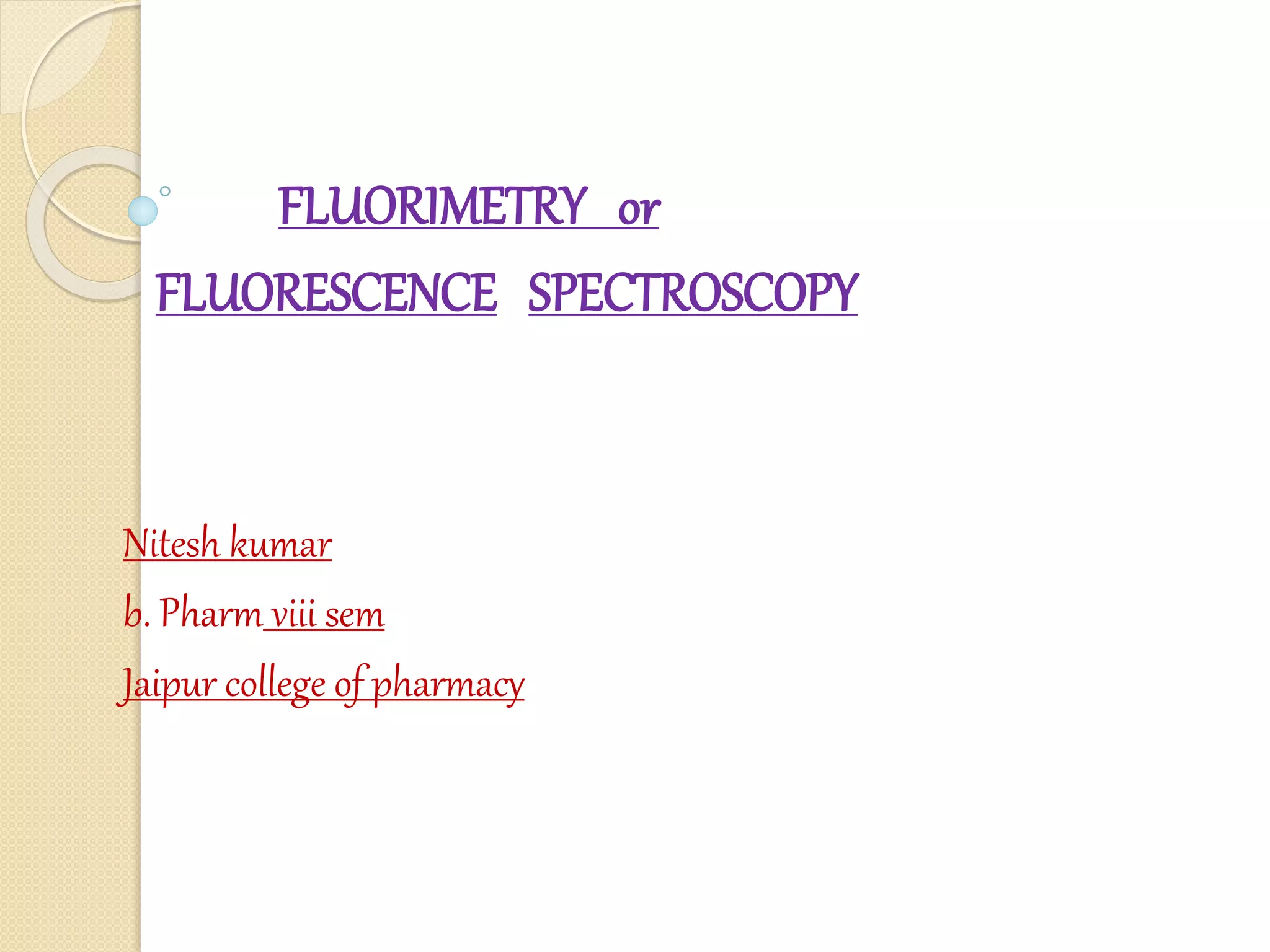The document provides an overview of fluorimetry, detailing the principles of fluorescence and measurement techniques. It discusses the factors affecting fluorescence intensity, various types of instrumentation used in fluorimetry, and applications for the quantitative analysis of specific substances. Additionally, it covers the mechanisms of electron excitation and the importance of different components such as light sources, filters, and detectors in fluorescence spectroscopy.













